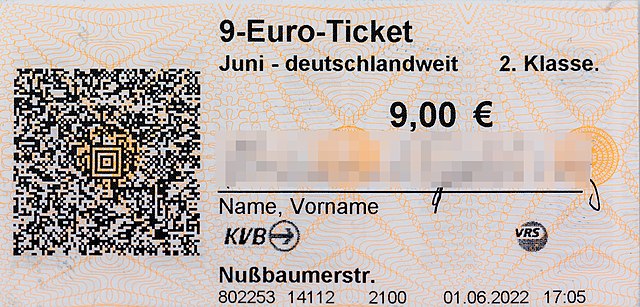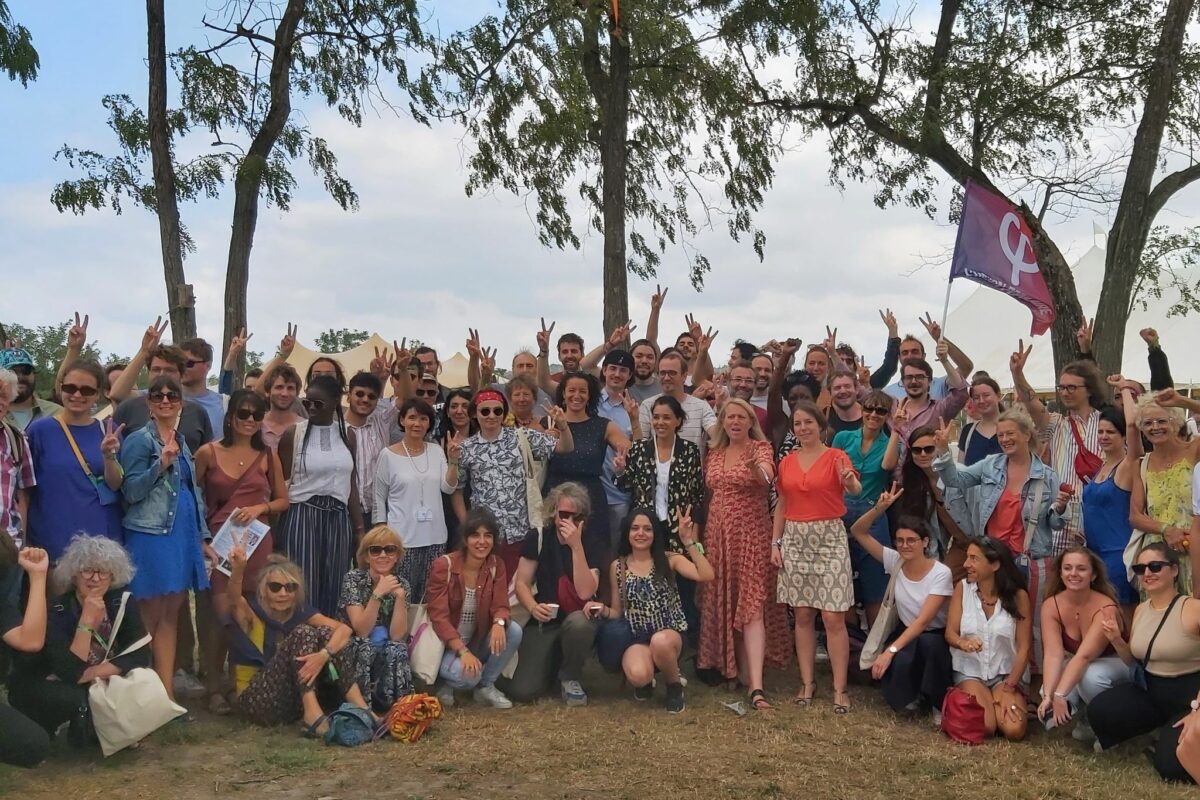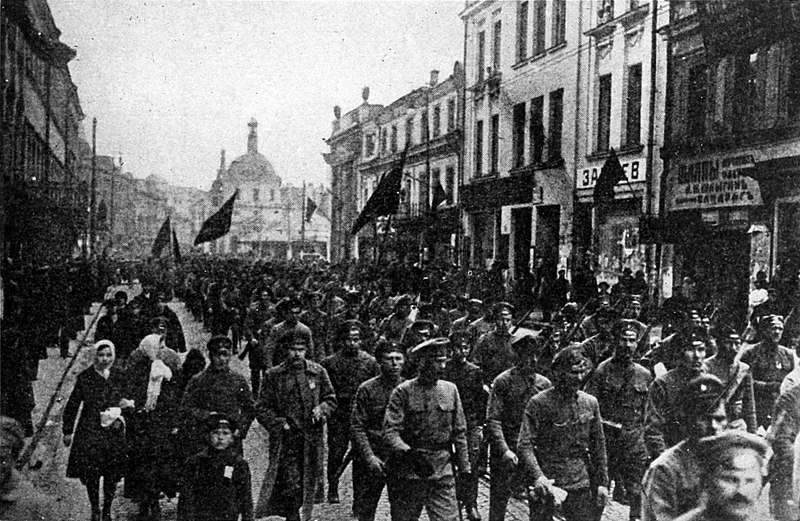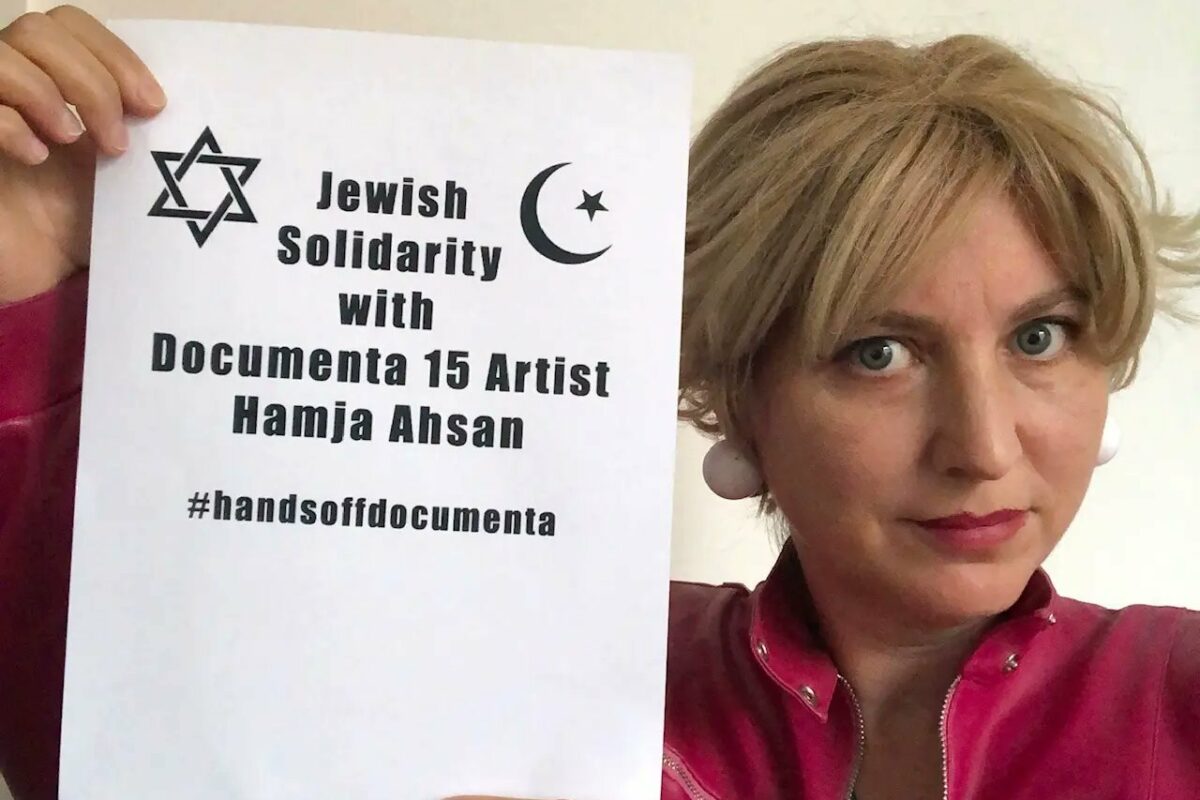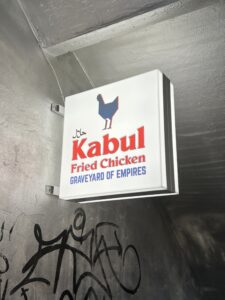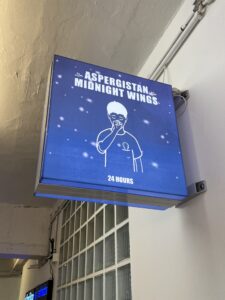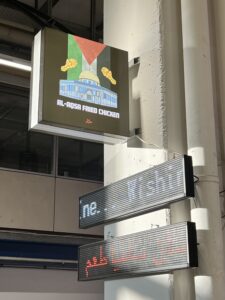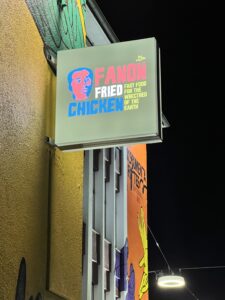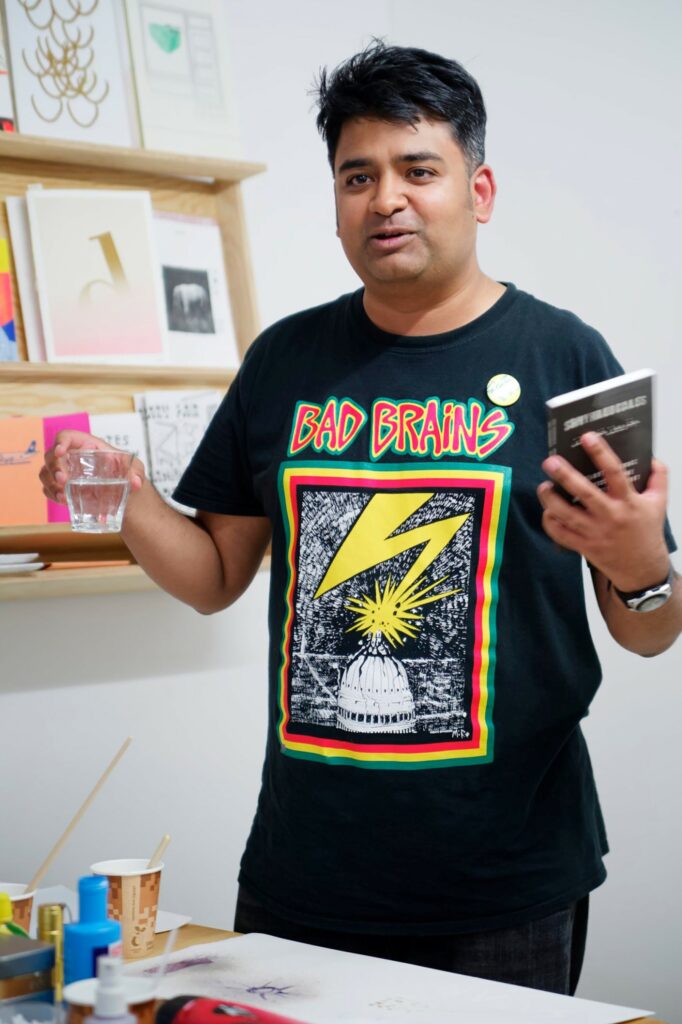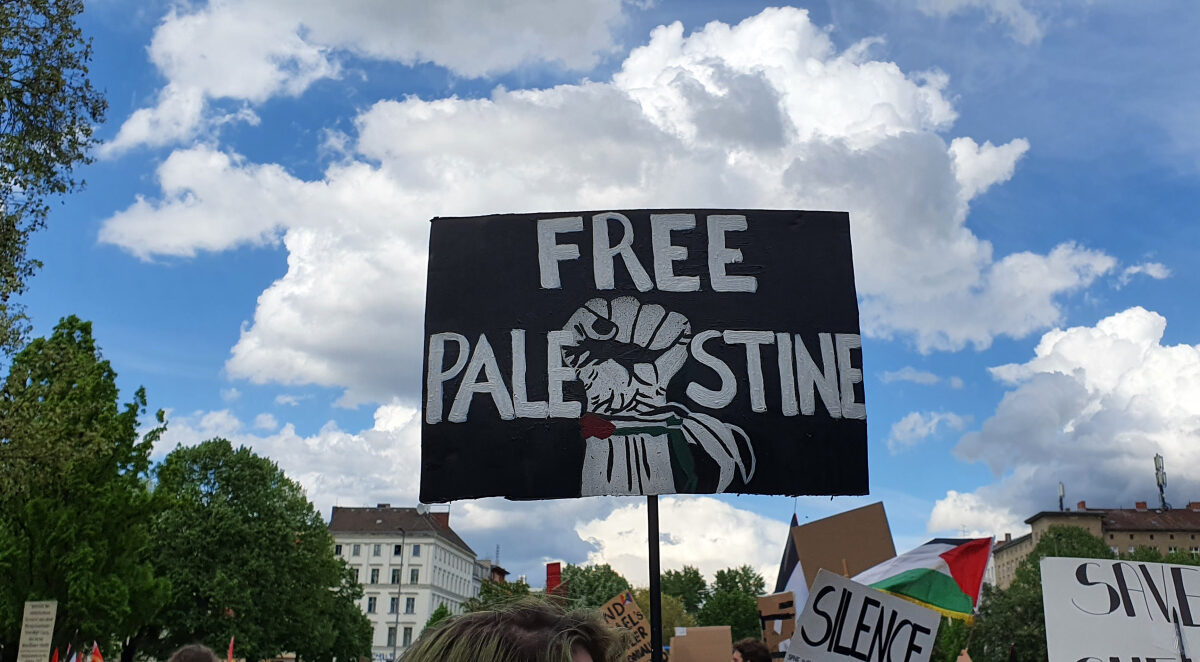A significant number of the German Left believes that Two States is the only possible solution for Israel/Palestine. So, for example, on 13 May, 2021, leaders of die LINKE, Susanne Hennig-Wellsow und Janine Wissler, issued a statement saying that we “further believe that only a Two State Solution between Israel and Palestine will bring a life in safety for the Israeli and Palestinian people.”
A briefing paper of the parliamentary fraction of die LINKE proudly states that: “all parties represented in the Bundestag stand for a Two State settlement”.
Many liberal international forces also make the same demands.
For example, President Obama said in 2011: “the ultimate goal is two states for two people: Israel as a Jewish state and the homeland for the Jewish people and the State of Palestine as the homeland for the Palestinian people.”
Earlier this year, new German Chancellor Olaf Scholz visited Jerusalem and called for a Two State Solution, saying: “people on both sides have the right to live in safety and dignity”.
Donald Trump also called for a “realistic Two State Solution for the middle East” in 2020. Admittedly, Trump’s opinion on Palestine remains unclear, and follows the same incoherent, contradictory pattern he exercised on most topics throughout his presidency.
In Palestine
Just as many western perspectives collectively promote the Two State Solution, a large part of the political leadership in Palestine make the same demands.
As far back as 1947, the Palestinian Communist Party accepted the partition that took place in 1948, which then led to the Nakba.
Following the 1967 war, Nayif Hawatmeh, leader of the Marxist-Leninist DFLP called for a Palestinian state in the Occupied Territories.
In 1988, PLO and Fatah leader Yasser Arafat accepted UNO Resolution 242 and UNGA Resolution 181, otherwise known as the Partition Plan. He attempted to implement this partition in the Oslo Accords of 1993 and afterwards.
In 2000, Abu Ali Mustafa, der the new leader of the left wing PFLP implicitly supported the Fatah model. This led to a split in the Palestinian Left and in 2010, the PFLP called on the PLO to break off negotiations with Israel, to enable a One State Solution.
And in 2017, Hamas leader Khaled Meshaal also accepted a Palestinian state inside the 1967 borders. In the same year, a representative of the PLO dismissed any alternative to a Two State Solution as “painful bloodshed”.
With such resounding support for the Two-State Solution from what appears to be all sides, what’s left to discuss? I believe that there are many issues with the Two-State Solution that are often glossed over, which fosters misinformation and hinders progress for a realistic solution.
What’s it all about?
In order to approach the Two-State Solution, I want to put forward 3 main arguments:
-
The Two State Solution was never a solution for ordinary Palestinians.
-
Even if the Two State Solution was once possible, the extensive building of settlements in the last two decades means that it is no longer an option.
-
Even if a Two State Solution was the only possible solution, it is not the job of the white German Left to tell the Palestinian resistance what form their resistance must take.
I would also like to address three of the most common arguments used in favour of a Two State Solution:
-
Argument 1: A state with a Jewish majority is necessary to protect Jewish people from antisemitism.
-
Argument 2: Two States is the only realistic solution. Everything else is utopian.
-
Argument 3: Two States may not solve everything, but something is better than nothing, and Two States offers an interim solution for the beleaguered Palestinians.
Once I’ve tried to address these arguments, I would like to make my contribution towards the discussion about how the problem should be solved.
Argument 1: A state with a Jewish majority is necessary to protect Jewish people from antisemitism
The Two State Solution concerns itself predominately with the need for a Jewish State. After the Holocaust, pogroms [the organised massacre of Jews, particularly in pre-Soviet Russia] and other known cases of antisemitism, a Jewish State is the only way in which Jewish people can live in safety. So goes the argument.
Let’s examine the reality of this logic. Is it really so, that Jews who live in Tel Aviv or Jerusalem are safer than those in New York or Berlin?
Despite the alarming rise of antisemitism in the US and Europe, Jewish people in these countries can still coexist in relative peace with others. In contrast, the State of Israel also continues in its present form by encouraging its inhabitants to live in a state of permanent fear.
Jewish people in Israel are treated as occupiers. The relationship between Jews and non-Jews in an occupied country means that Jews in Israel can never feel safe. There will always be some people who live on stolen land and others who want their land and property back.
Is Israel a democratic State?
The basic laws of Israel state that Israel is “a Jewish and democratic state”. Similarly, in the 1970s, the Israeli High Court ruled that “there is no Israeli nation separate from the Jewish nation”. [White, pp.12-13]
But can a state be Jewish and democratic? If Israel’s claims of democracy are true, then how can this democracy function if Jews inherently carry special rights?
Israeli politicians have clearly stated how they understand a “democratic” Jewish State to function. Former president Netanyahu made his position clear when he spoke out against migrants and refugees from Africa because they “threaten our existence as a Jewish and democratic state.”
Interior minister Eli Yishai offered an even clearer position, stating in 2012 that “Muslims that arrive here do not even believe that this country belongs to us, the white man.”
Many Israeli right wingers express concerns regarding the “demographic time bomb” – pointing to the statistical fact that poorer populations tend to have more children. This could result in Palestinians being a majority in Israel.
The former Israeli President Golda Meir, for example verified this fear, expressing: “her sleep was often disturbed at the thought of how many Arab babies had been born in the night.“[Hirst, p369]
Where does such state racism lead? Here just one example from Ali Abunimah:
“There are also credible allegations that Israel may have engaged in the most noxious methods of ethno-racial population control. In 2012, a number of Ethiopian women said that they had been forced to take the long-acting injectable birth-control Depo-Provera before they were allowed to emigrate to Israel. The matter came to light when an Israeli journalist began to investigate an astonishing 50-percent drop in births among Ethiopian women over a mere 10 year period.“
[Abunimah, p34]
How are Palestinians excluded?
In the State of Israel, a distinction is made between citizenship and nationality. Civil and political rights are issued determined to nationality. Possible Nationalities are, for example, Jewish, Arab and Druze, and the nationality with the most privileges is Jewish.
Let’s examine some statistics from the Equality Index of Jewish and Arab Citizens in Israel. Just in Israel – that is the area which does not include the West Bank and Gaza – Jews live on average 4 years longer.
Child mortality is 7.7 per 1000 for Palestinians, around 3 per 1000 for Jews. In 2009, 17% of Israeli Jews lived in poverty, against 54% of Arabs. The poverty level for Palestinian children is 63%.
From 2014-2021, 77 percent of all indictments for incitement claims of violence and racism were filed against Palestinians, despite Palestinians accounting for only 20% of the entire population. 99% of the Palestinians facing convictions faced jail service, in stark contrast to only 46% of Israelis facing jail time.
Additionally, examples of systematic discrimination are peppered into Israel’s legal system.
In 2003, Israel introduced “temporary” laws, which deny residency or citizenship to Palestinians from the West Bank or Gaza who marry Israeli citizens. By 2007, this law was extended to include people from Iraq, Syria or Lebanon. [White, pp. 12-13]
In 2008, Israeli medical schools raised the age of accepting new students from 18 to 20. That posed no problems for Israelis who must serve 2 years military service after leaving school. The decision disadvantaged Palestinian students who were forced either to move to a different country or to choose a different career. [Pappé, 2011, p166]
These are just a few of the many micro-aggressions which demonstrate that Palestinians are not welcome in their own country.
Jewish National Fund
Let’s now explore the Jewish National Fund (JNF), a non-profit organization which provides funding for land purchase and development in Palestine.
A Human Rights Watch report Discrimination in Land Allocation and Access declares the following: “Unlike most industrialized countries, which have widespread private land ownership and a free real estate market, in Israel the state controls 93 percent of the land. This land is owned either directly by the state or by quasi-governmental bodies that the state has authorized to develop the land, such as the Development Authority and the Jewish National Fund.”
A free real estate market may not be our first demand, but this imbalanced distribution portrays the qualities of a racist state. JNF housing and land are exclusively rented to Jews. This systematic discrimination leaves denies Arabs access to 80% of all public land.
Many of the houses and land which the JNF has expropriated once belonged to Palestinians who were forced to leave their homes and land during the Nakba. In other words, the JNF is an instrument facilitated by the State of Israel to acquire stolen Palestinian land and sell it to Israelis.
Bedouins, indigenous people which originate from the Negev desert are particularly affected by the rigid land ownership laws. Their indigenous land represents a quarter of the population in the Negev desert, yet Bedouin municipalities of jurisdiction of only 1.9% of the land in the region.
Why are these arguments important?
It is critical to showcase the depth and breadth of areas which reflect the true nature of the undemocratic Jewish state. The lifeblood of the State of Israel is the persistent exclusion of Palestinians and the robbery and reclaiming of property.
A Two State Solution does nothing to challenge these inhumane inequalities. It simply states that the inequality should continue to persist within different borders. If we believe that the State of Israel discriminates systematically against Palestinians, forming a Palestinian state next to Israel is no counterweight against this discrimination.
Argument 2: Two States is the only realistic solution. Everything else is utopian
Some liberal Zionists argue that one state could be nice in theory, but it would be impossible to implement such a solution in reality.
For example, Zach Beauchamp says: “As far away as it may seem, the two-state solution is still the best possible option available for resolving the Israeli-Palestinian conflict. That’s in large part because the alternatives are even less plausible.”
But let us look at exactly how plausible Two States are in 2022. As said, I believe that Two States was never a sustainable solution, but if you propose a Two State Solution, you must explain how this would be possible under the current conditions, including the settlement of the West Bank.
The Settlements
According to Ilan Pappe: “large parts of the West Bank are already settled. It is physically impossible to set up a state there”.
The One Democratic State Campaign explains why:
“Israel governments going back to 1967 have rejected the notion of a viable, genuinely sovereign Palestinian state alongside Israel, together with the very fact of occupation. Instead, Israel annexed East Jerusalem, has moved 700,000 settlers into the territory that would have been a Palestinian state, and confined 95% of the Palestinians to the tiny islands of Areas A and B in the West Bank, and a besieged Gaza.”
“In January 2020,Prime Minister Netanyahu announced that Israel would annex the Jordan Valley “and all the settlements,” in accord with Trump’s “Deal of the Century.” Nor is there any will on the part of the international community to sanction Israel or force it to withdraw from the Occupied Territory.”
The liberal Zionist Peter Beinart noted that the proposal from Trump and Netanyahu required the annexation of up to 30% of the West Bank. As a reparation, the Palestinians were offered half as much land in Israel – and most of this was uninhabitable desert land.
As a reminder, the West Bank and Gaza only account for 22% of historic Palestine. What is being offered here is around 15%, and this is before we talk about the land which has been gobbled up by the Apartheid wall and the excessive barriers surrounding it.
According to an Amnesty report“more than 80 per cent of the fence/wall is located on occupied Palestinian land inside the West Bank, rather than along the Green Line between Israel and the West Bank. The route of the fence/wall has been planned in such a way that it prevents access by Palestinian to areas of the West Bank which include some of the best access to water, notably the Western Aquifer.”
Additionally, there is land claimed for usage as the so-called “bypass roads” which only settlers are allowed to use, and the barracks for the soldiers who protect the settlers. Until now, no-one has suggested that these remnants of Apartheid should be eliminated under the Two State Solution.
That means that even less land is available for Palestinians.
Tanya Reinhart makes the following estimation: “if the settlements stay, of course, the Israeli army will stay as well to protect them, and thus the situation will remain as it is now – namely the Palestinian ‘state’ will consist of 42 per cent of the West Bank.”
In other words, this means just 10% of historic Palestine will be left for the Palestinians.
Access to Water
This brings us to the next problem for a viable Palestinian state. It is common knowledge that Israelis enjoy all of the luxuries of access to plentiful amounts of water such as swimming pools and lawn care, while Palestinians cannot drink or cook with their tap water.
Israelis consume at least four times as much water as Palestinians in the West Bank and Gaza. Palestinians in the West Bank use 80 litres of water per person per day, an amount which falls below the WHO recommendation of 100 litres of daily consumption.
Israelis reap major economic benefits with subsidies by US tax money. But the fact that they also control access to the most critical water sources means that even without these massive subsidies, they have material advantages over the Palestinians.
This is not just because the Israeli economy is subsidised by US tax money, making Israeli citizens better off. Israel also controls access to water sources.
According to a 2009 Amnesty report, 180,000-200,000 Palestinians in rural communities in the West Bank have no access to running water. Israel has deliberately destroyed water tanks.
Although the West Bank and Gaza formally have their own governments, Israel passed monumental Military Orders in 1967 and 1968 which granted the Israeli army full authority over “all water-related issues” in both region.
Palestinians are prohibited from building any new water installations or drill wells without permission from the Israeli army.
In Gaza conditions are even worse than in the West Bank, even though Israel formally withdrew from the area in 2005. The Israeli blockade of Gaza means that people have little access to water or electricity. Over 90% of water extracted from the one aquifer in Gaza is contaminated and unfit for human consumption.
In 2009, the UNRWA reported that: “Watery diarrhoea as well as acute bloody diarrhoea remain the major causes of morbidity among reportable infectious diseases in the refugee population of the Gaza Strip”
The only reliable source of clean water for people in Gaza is for them to buy it from Israel. But Israel’s protracted war with the people of Gaza means that it is not always prepared to even sell the water that is necessary to avoid such dangers to people’s health.
Argument 3: Two States may not solve everything, but something is better than nothing, and Two States offers an interim solution for the beleaguered Palestinians
There is still the argument that the current situation in the West Bank is so hopeless that the Palestinians can’t afford to wait for a utopian One State Solution. Something must be done now.
To see exactly how bad things are, let’s look at an Amnesty report, which says the following:
“Israel’s military rule disrupts every aspect of daily life in the Occupied Palestinian Territories. It continues to affect whether, when and how Palestinians can travel to work or school, go abroad, visit their relatives, earn a living, attend a protest, access their farmland, or even access electricity or a clean water supply. It means daily humiliation, fear and oppression. People’s entire lives are effectively held hostage by Israel.”
Things are similar in Gaza. A recent report says that “since 2007, nearly 850 patients in Gaza have died after their permits to access hospitals in the West Bank and Israel were denied or delayed.”
There is a strong argument that Palestinians need more control in order to save lives. This argument does not say that Two States will necessary solve all problems, but will at least avoid the worst. And something is better than nothing.
The most convincing version of this argument comes from Tanya Reinhart, a historian and supporter of the Palestinians who I rate very highly. In 2002, Reinhart called for 2 States as an interim solution as follows:
“I believe it would be a great oversight to give up the concrete chance to get back much of the Palestinian lands now, in the hope that in the future one could get more. Whatever solution the two peoples arrive at in the future, it must be based on the Palestinians having land, resources, and the freedom to develop anyway. So the process of acquiring these basics should start now, regardless of the final vision.” [Reinhart, pp 228-9]
But will a Palestinian State really solve these problems?
The Amnesty report referenced above details the daily weight of occupation for Palestinians who can’t go abroad and have no access to electricity or clean water supplies.
But this is an exact description of the current situation in Gaza. And this situation will not significantly change if Gaza becomes an independent state. Ultimately Israel will continue to control the borders and access to clean water.
Haider Eid sees it as follows: “What we have ended up with in the Gaza Strip is an open-air, maximum security prison separated from the other prison in the West Bank. These two prisons cannot make a “sovereign, independent state”, unless one calls ‘la la land’ a state, or what the late revolutionary intellectual and freedom fighter Amilcar Cabral derided as ‘flag independence.’”
Edward Said has the following to say about such ‘flag independence’: “Israel and the United States are at bottom delighted to give us symbols of sovereignty, such as a flag, while withholding real sovereignty, the right of return for all refugees, economic self-sufficiency, and relative independence. I have always felt that the meaning of Palestine is something more substantial than that.” [Said, page xx]
Said notes that the Palestinian National Council also declared an independent state in 1988, although this declaration did not provide any meaningful change for the daily lives of Palestinians.
Bantustans?
Gaza could be immediately declared as a State, but this would not change the facts on the ground. A Gazan State under the current conditions would be equivalent to a Bantustan in Apartheid South Africa.
Black South Africans, born in Johannesburg or Pretoria, were suddenly informed that they were citizens of Tranket or Ciskei – artificial states, which had never been visited by many of their citizens. The Apartheid government even attempted to gain UN recognition for these “independent states”.
Bantustans had their own elections and parliaments. But Human rights, including safety, natural resources and control, were left out of the equation.
After the Oslo Accords, Tanya Reinhart noted: “To solve the water shortage in Gaza, the Palestinians will be allowed to buy water from Israel. Hence, the starting point for Gaza is worse than a Bantustan: neither water nor land.” [Reinhart, p238]
Before Israel’s prime minister Yitzhak Rabin was murdered, he stated his vision for a future Palestine as “an entity less than a state”. Rabin is now feted as being one of Israel’s most progressive leaders. The current government is offering even less.
Right of Return – What will happen to the Refugees?
Ilan Pappe says: “The Two State Solution reduces Palestine to 22 per cent of historic Palestine, and the Palestinians to only those who live in the West Bank and the Gaza Strip. As long as not all Palestinians and the whole of historic Palestine are included in a future solution, there is no chance for a viable and real reconciliation”.
We have already seen that the Two State Solution which has been offered so far actually reduces Palestine to 10% of historic Palestine, and says very little about the refugees who had to flee Israel in 1948 and after.
There are now at least 7 Million Palestinian refugees. Many live in refugee camps in Israel’s neighbours like Jordan and Lebanon. This includes grandchildren and great grandchildren of people who fled their homes during the Nakba in 1948 – nearly 75 years ago.
UN Resolution 194 states that: “refugees wishing to return to their homes and live at peace with their neighbours should be permitted to do so at the earliest practicable date, and that compensation should be paid for the property of those choosing not to return.”
You might say that this is just a worthless paper resolution, but if UN resolutions can be ignored, who seriously believes that the Israelis will accept other solutions?
The refugees must go somewhere. But, based on the facts given earlier in this article, it is apparent that a future Palestinians state is barely viable even under the Two State Solution.
Additionally, many of the refugees are from 1948 Palestine, not from the West Bank or Gaza. Will these people will really be allowed to return to their homes?
What will happen to the Palestinians who live in “Israel”?
This brings us to the question of the 1.9 Million Palestinians who currently live in “Israel”. Will they be allowed to stay? And if so, with which rights?
There is a large danger that Two States will lead to a partition like in India in 1947-8. This was when 15 million people had to leave their homes, and travel either from India to the new state of Pakistan, or in the other direction. In the ensuing massacres, between 1 and 2 million people were murdered.
Pakistani historian Ayesha Jalal called partition “the central historical event in twentieth century South Asia.” She went on: “A defining moment that has neither beginning nor end, Partition continues to influence how the peoples and states of postcolonial South Asia envisage their past, present and future.”
Jerusalem
And what will happen to the Palestinians who currently live in East Jerusalem? Many versions of the Two State Solution envisage East Jerusalem as the capital of a Palestinian state. But the devil is in the detail.
If you’ve ever been to Jerusalem, you will know East Jerusalem, also known as Al-Quds, as the liveliest part of town, the part with the old city and the Al-Aqsa mosque. Al-Aqsa is considered to be the third-holiest site in Islam.
The Website Islam ist describes Al-Quds as follows: “before Mecca became Muslim, the first direction of prayer was in no less than Jerusalem. This, and other important reasons, make Jerusalem an outstanding place for Muslims until today.”
But If we look at any discussions of a possible Two State Solution by either the Israeli or US government, if they mention East Jerusalem at all, they are not referring to Al-Quds. Instead, they propose taking the village of Abu Dis and renaming this as East Jerusalem.
Abu Dis lies outside the city limits of Jerusalem, and was described by Reuters Journalist Stephen Farrell as: “a relatively featureless urban sprawl on the old road to Jericho, it has little of the religious or cultural resonance of the historic city centre, which contains sites sacred to the three great monotheistic faiths: Judaism, Christianity and Islam.”
The offer of Abu Dis instead of Al-Quds was already clear in the Camp David agreement of 2000. According to Phyllis Bennis: “the Palestinians would be offered some modicum of authority over the villages, one of which, Abu Dis, would be declared the “capital” of a Palestinian statelet. Palestinians would be “allowed” to call the dusty hillside village “Jerusalem.” Only problem is, everyone knows that Abu Dis is not Jerusalem. Redrawing municipal borders doesn’t make it so.”
In decades of negotiations, the Israelis mentioned Abu Dis as one possibility among others. Trump and Netanyahu’s “Deal of the Century” went even further. Al-Jazeera reports: “Trump has formalized the question of Abu Dis as the only possible PA capital in the future. Trump’s move of the US embassy from Tel Aviv to Jerusalem was meant to remove any hope for the reopening of negotiations on this question.”
One important question is rarely addressed. What will happen to the 372,000 Palestinians who live in Jerusalem? Will they also be expelled – to a village without infrastructure, without resources, without industry?“
So, what is the solution?
What will a democratic state look like?
Unfortunately, I can say very little to this question. The decisions about what a democratic state should look like should be made exclusively by the people who will live there.
Nevertheless, I can share some thoughts of Ilan Pappé. In an Interview with the German newspaper neues deutschland, Pappe spoke of: “a democratic state which accepts the Palestinian refugees who want to return, with equal rights for all, without discrimination based on religion, nationality, race, ethnicity or gender. One which distributes the country’s wealth according to the principles of social justices, compensation and equal opportunities for everyone. One which respects collective identity, multi-cultural, multi-ethnic conditions of “live and let live”, without any group using the state to enforce any supremacist ideologies.”
That’s not a bad start.
Comparison with South Africa
South Africa provides us with 2 examples – one positive, one negative, which show us what a joint state could look like.
Positively, there is the successful fight of a movement, which according to Haider Eid “mobilised international civil society around the idea of one person, one vote and the establishment of a secular democratic, non-racial, non-sectarian state.”
Eid sees the ANC’s fight in South Africa as something quite different, and much better, to the endless compromises of the PLO in negotiations with Israel.
The ANC’s victory was unexpected by many. In 1989, South Africa’s President de Klerk said that the ANC’s demands for equality were “unjust”. de Klerk “unequivocally rejected” the possibility of majority rule. Nonetheless, by the beginning of 1990, Nelson Mandela was free, and the negotiations for the end of Apartheid had already begun.
Those who say that a state for Palestine would be impossible because of settlers prepared to use violence, should think of Apartheid South Africa and the armed paramilitaries of the fascist AWB. The AWB was no fringe organisation. In 1986 alone their membership trebled to 100,000 people [Abunimah, p51]
And yet, when push came to shove, and white South Africans saw no alternative to peaceful coexistence, they accepted the inevitable.
The negative example of South Africa is the fact that Apartheid was overcome, but exploitation, oppression and capitalism remain. This year sees the tenth anniversary of the Marikana massacre when police controlled by the ANC massacred striking miners.
There is no space in this article to carry on this debate, but it does raise one important question: One State is the necessary solution, but is it sufficient?
Will Israelis and Palestinians accept a One State Solution?
One argument against a One State Solution is that Israelis would not accept it. For example, Zach Beauchamp argues that “The Israeli commitment to Zionism creates an insuperable political problem for a one-state solution.”
My first answer is “so what?” Apartheid was overcome in South Africa despite the commitment of white South Africans to racism, colonialism was beaten in India and Algeria against the will of the Britons and French occupiers.
It is much more important to ask whether Palestinians would oppose the idea. As I have already argued, it is not the job of the European Left to dictate to Palestinians how they should liberate themselves. This is true for Europeans who will only support Palestinians who support the Two State “Solution” but it also applies to us. Ultimately, this is not our decision.
There is an argument that says that after so many years of oppression and exclusion, the Palestinians will inevitably seek revenge. The example of South Africa demonstrates that this is not necessarily the case.
It is also true, that for a long time, the majority of Palestinians supported the Two State Solution, at the very least as an interim solution. I remember conversations in 2014 during the bombardment of Gaza with many Palestinians who had illusions – or let’s say hope” in Two States.
But the figures are changing. Gala Golan reports that Palestinian support for 2 States dropped from 71% in 2010 to 43% in December 2018. The reason was: “frustration and failures of Fatah’s preference for negotiations and compromise, under both Arafat and Abbas.”
Tanya Reinhart’s statistic are not identical – she says that at the high point, Palestinian support for Two States was 80%. [Reinhart, p53]. But it’s becoming increasingly clear that a majority of Palestinians are no longer convinced in the Two State Solution, not even as an interim solution.
Peter Beinart, who calls himself a liberal Zionist, and has advocated a Two State Solution for a long time, now says that it’s Two States which is an illusion. He goes on: “The right question is not which vision is more fanciful at this moment, but which can generate a movement powerful enough to bring fundamental change … A struggle for equality could elevate Palestinian leaders who possess the moral authority that Abbas and Hamas lack.”
So it is not just that One State is more practical. It is a demand which is more likely to raise a fighting opposition to the “same old same old”.
Who has the power to enforce change?
The last question is probably the most important, as if you wrongly identify the motor of change, you look for changes which are either impossible or unwanted.
The starting point for too many people – both Left and Right – is to ask what the Israelis (either the State or the people) are prepared to accept. Some push the question further by making their proposals dependent on what US Imperialism is prepared to allow.
Our starting point should be different. We want to build a mass movement in the whole region that overcomes the system of colonialism and exploitation. That means that what the settlers want, or what they are prepared to accept are irrelevant to us.
The USA and the EU are part of the problem. We should not appeal to them for justice. This March, the US House of Representatives approved a further $1 billion for Israeli “defence aid”. This is on top of the $3.8 Billion, which the USA donates Israel every year. This money financed the last bombing of Gaza – either directly or indirectly.
If the US government – any US government – were serious about peace in the Middle East, they could withdraw all financial support for Israel until Israel at least agreed to accept existing UN resolutions.
Israel – and the Israelis – are also part of the problem. Because of the tremendous amount of US financial support, there are material reasons for Israelis to support the occupation. Just as under Apartheid South Africa, individual occupiers may support decolonisation, but any effective movement for change must come from the Palestinians themselves.
A movement under Palestinian leadership which fights against all colonialism and imperialism does not have to stay with a solution which allows an unviable state next door to a state with much more wealth and resources, where the old exploitation continues.
If we want to build a movement that is strong enough to confront Israel and US Imperialism, why should we accept the crumbs of Two States, when we can take over the whole bakery?
Bibliography
-
Ali Abunimah The Battle for Justice in Palestine (Haymarket Books, 2014)
-
Al-Jazeera Hamas accepts Palestinian state with 1967 borders 2nd May 2017
-
Al-Jazeera The “Deal of the Century”: The Final Stage of the Oslo Accords 6th November 2018
-
American Friends Service Committee Palestinian refugees and the right of return
-
Amnesty International “Troubled Waters – Palestinians Denied Fair Access To Water” …
-
Amnesty International Israel’s Occupation: 50 Years of Dispossession
-
Ramsy Baroud Is PFLP trying to make a comeback?, Arab News, 25th November 2014
-
Zach Beauchamp In defense of the two-state solution Vox, 26th May 2021
-
Peter Beinart Yavne: A Jewish Case for Equality in Israel-Palestine, Jewish Currents, 7th July 2020
-
Phyllis Bennis Camp David’s Unspoken Bottom Line: The Disparity of Power TNI Website, 23rd July 2000
-
William Claiborne Majority Rule ‘Unjust” says Botha’s heir Washington Post, 13th May 1989
-
Constitute Israel’s Constitution of 1958 with Amendments through 2013
-
William Dalrymple The Great Divide. The violent legacy of Indian Partition New Yorker, 22nd June 2015
-
Alistair Dawber Israel gave birth control to Ethiopian Jews without their consent, Independent, 27th January 2013
-
Deutsche Welle US-Präsident Trump präsentiert Zwei-Staaten-Lösung, 28th January 2020
-
Die LINKE im Bundestag Nahostkonflikt – Themenpapiere der Fraktion
-
Haider Eid The two-state solution: The opium of the Palestinian people 29th December 2020
-
Haider Eid The urgent need to revitalize the Palestinian Left, Mondoweiss, 25th January 2021
-
Stephen Farrell Abu Dis, an unlikely capital for a future Palestinian state Reuters, 29th January 2020
-
Gadia Golan, The History of the Two-State Solution, Palestine-Israel Journal of Politics, Economics and Culture, Vol 24. No 1, 2019
-
Susanne Hennig-Wellsow und Janine Wissler Zur aktuellen Entwicklung im Nahostkonflikt, 13th May 2021
-
David Hirst The Gun and the Oliver Branch: The Roots of Violence in the Middle East (Nation Books, 2003)
-
Jake Horton, BBC Reality Check Israel-Gaza: How much money does Israel get from the US? Mai. 24 2021
-
JustVision Popular Front for the Liberation of Palestine (PFLP)
-
Human Rights Watch Off the Map. Land and Housing Rights Violations in Israel’s Unrecognized Bedouin Villages. Kapitel IV Discrimination in Land Allocation and Access
-
Institute for Middle East Understanding Fact Sheet: Palestinian Citizens of Israel
-
Islam Ist Die Bedeutung Jerusalems für Muslim*innen
-
Jerusalem Post PLO official: Alternative to two-state solution is ‘painful bloodshed’ 16th February 2017
-
Middle East Monitor Israel’s ‘flawed law enforcement’ does not account Palestinians and Israelis equally 2nd August 2022
-
Ujjawi Mishra Why Our Children Must Learn About India’s Partition Horrors Swaraya, 14th August 2022
-
Maureen Clare Murphy Israel tightens Gaza chokehold Electronic Intifada, 4th August 2022
-
Newswires “Unbearable Memories, Unspeakable Histories” art Exhibition Commemorates 75th Anniversary of Partition of India 10th August 2022
-
One Democratic State Campaign One Democratic State in Historic Palestine: Fears, Hopes, Concerns and Questions 9th May 2020
-
Nadda Osman Al-Aqsa Mosque: The significance of one of Islam’s holiest sites Middle East Eye, 15th April 2022
-
Ilan Pappé The Forgotten Palestinians. A History of the Palestinians in Israel (Yale University Press, 2011)
-
Ilan Pappé Weder Ein- noch Zwei-Staaten-Lösung Quantara, 7th March 2016
-
Ilan Pappé Zwei-Staaten-Lösung nicht realistisch neues deutschland, 22nd May 2021
-
Yitzhak Rabin Speech to Knesset on Ratification of Oslo Peace Accords, Jewish Virtual Library, 5th October 1995
-
Tanya Reinhart Israel/Palestine. How to end the war of 1948 (Seven Stories Press. 2002)
-
reliefweb OPT: Epidemiological bulletin for Gaza Strip vol 1, issue 1 15th February 2009
-
Reuters After 10 years, widows of victims of ‘Marikana massacre’ are left with no answers 16th August 2022
-
Jay Ruderman, und Prof. Yedidia Z. Stern Is “Israeli” a Nationality? The Israel Democracy Institute 9th March 2014
-
Edward W. Said The End of the Peace Process. Oslo and After (Granta Books, 2000)
-
Sikkuy Report 2009 The Equality Index of Jewish and Arab Citizens in Israel
-
Times of Israel US House approves $1 billion for Israel’s Iron Dome after months-long delay 10th March 2022
-
United States President Public Papers of the Presidents of the United States
-
UNRWA Resolution 194
-
Dana Weiler-Polak Israel Enacts Law Allowing Authorities to Detain Illegal Migrants for Up to 3 Years, Ha’aretz, 3rd June 2012
-
Ben White, Palestinians in Israel – Segregation, Discrimination and Democracy
